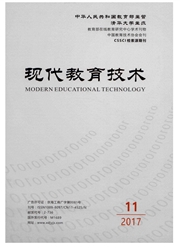

 中文摘要:
中文摘要:
Downy mildew(DM), caused by the fungus Peronospora parasitica, is a destructive disease of radish(Raphanus sativus L.) worldwide. Host resistance has been considered as an attractive and environmentally friendly approach to control the disease. However, the genetic mechanisms of resistance in radish to the pathogen remain unknown. To determine the i nheritance of resistance to DM, F1, F2 and BC1F1 populations derived from reciprocal crosses b etween a resistant line NAU-dhp08 and a susceptible line NAU-qtbjq-06 were evaluated for their responses to DM at seedling stage. All F1 hybrid plants showed high resistance to DM and maternal effect was not detected. The segregation for resistant to susceptible individuals statistically fitted a 3:1 ratio in two F2 populations(F2(SR) and F2(RS)), and 1:1 ratio in two BC1F1 populations, indicating that resistance to DM at seedling stage in radish was controlled by a single dominant locus designated as Rs Dm R. A total of 1 972 primer pairs(1 036 SRAP, 628 RAPD, 126 RGA, 110 EST-SSR and 72 ISSR) were screened, and 36 were polymorphic between the resistant and susceptible bulks, and consequently used for genotyping individuals in the F2 population. Three markers(Em9/ga24370, NAUISSR826700 and Me7/em10400) linked to the Rs Dm R locus within a 10.0 c M distance were identified using bulked segregant analysis(BSA). The SRAP marker Em9/ga24370 was the most tightly linked one with a distance of 2.3 c M to Rs Dm R. These markers tightly linked to the Rs Dm R locus would facilitate marker-assisted selection and resistance gene pyramiding in radish breeding programs.
 英文摘要:
英文摘要:
Downy mildew (DM), caused by the fungus Peronospora parasitica, is a destructive disease of radish (Raphanus sativus L.) worldwide. Host resistance has been considered as an attractive and environmentally friendly approach to control the disease. However, the genetic mechanisms of resistance in radish to the pathogen remain unknown. To determine the inheritance of resistance to DM, F1, F2 and BC1F1 populations derived from reciprocal crosses between a resistant line NAU-dhp08 and a susceptible line NAU-qtbjq-06 were evaluated for their responses to DM at seedling stage. All F1 hybrid plants showed high resistance to DM and maternal effect was not detected. The segregation for resistant to susceptible individuals statistically iftted a 3:1 ratio in two F2 populations (F2(SR) and F2(RS)), and 1:1 ratio in two BC1F1 populations, indicating that resistance to DM at seedling stage in radish was controlled by a single dominant locus designated as RsDmR. A total of 1 972 primer pairs (1 036 SRAP, 628 RAPD, 126 RGA, 110 EST-SSR and 72 ISSR) were screened, and 36 were polymorphic between the resistant and susceptible bulks, and consequently used for genotyping individuals in the F2 population. Three markers (Em9/ga24370, NAUISSR826700 and Me7/em10400) linked to the RsDmR locus within a 10.0 cM distance were identiifed using bulked segregant analysis (BSA). The SRAP marker Em9/ga24370 was the most tightly linked one with a distance of 2.3 cM to RsDmR. These markers tightly linked to the RsDmR locus would facilitate marker-assisted selection and resistance gene pyramiding in radish breeding programs.
 同期刊论文项目
同期刊论文项目
 同项目期刊论文
同项目期刊论文
 期刊信息
期刊信息
